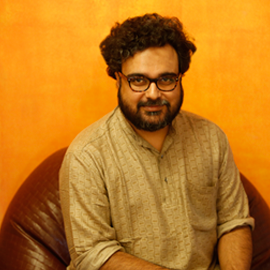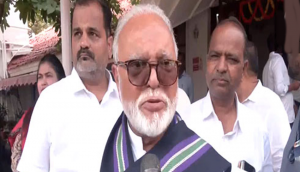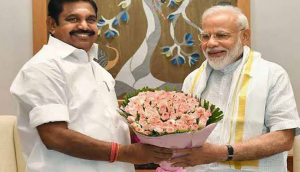Ashok Singhal is dead. Who will lead VHP now?

In the race
- The death of Ashok Singhal, the face of VHP, may start a succession race
- The two top contenders are Praveen Togadia and Champatrai
More in the story
- Will Togadia\'s ambitions help him or hurt him?
- Will proximity to Singhal see Champatrai through?
Ashok Singhal's name was bigger than the position he held in the Vishwa Hindu Parishad (VHP). He was one of the leading faces of the VHP since 1981 and became arguably the first among equals after the Ram Janmbhoomi movement in the early '90s.
"Singhal's contribution is highest in building the organisation's reputation, internationally," according to a condolence statement released by the VHP.
But what next?
Singhal died after prolonged illness on 17 November at 89. By then VHP gained a huge following, fuelled mainly by the Ram Temple movement and the Ram Setu campaign.
But the VHP is more than that. It is a vast organisation with large properties in many parts of the country.
The big question now is who will be the next face of the VHP? As Rashtriya Swayamsevak Sangh (RSS) and its sister organisations try to zero in on the answer, Catch tries to map it here:
While one contender, of course, is VHP's Working President-International Praveen Togadia, another crucial candidate is Champatrai, the organisation's secretary general-international, who was close to Singhal.
While these two individuals lead the two main factions within the VHP, there is a third name doing the rounds - Bhaiyaji Joshi, an RSS general secretary.
Buzz is RSS may push for Bhaiyaji Joshi to be the patron of the Vishwa Hindu Parishad
The firebrand doctor
Togadia, a medical professional, was brought into the organisation to serve the Hindutva agenda. He was not a RSS prachaarak or kaaryakarta who would know and understands the organisation inside out.
During the campaigns for Ram Mandir or Ram Setu, Togadia was not a known name. He gained publicity through his active role in Trishul Diksha. He also cultivated a firebrand image - that of a hindutva hardliner.
Unlike others serving the organisation through key programs derived by the VHP and the RSS, Togadia was a self-styled hardliner. He is supported by Swami Vigyanananda and Surendra Jain among others.
The rise of Togadia started during the prime ministership of Atal Bihari Vajpayee the in late '90s. the ambitious doctor gained publicity and even dreamt that one day he would be the chief minister of Gujarat.
Narendra Modi's rise didn't work out in his interest as Modi sidelined Togadia along with other competitors. Togadia's visibility has declined with Modi taking centrestage.
Togadia didn't share the Singhal camp's style and idea. Singhal praised Modi and backed him at a time when the organisation was not keen on bringing him to Delhi. Unlike Singhal, Togadia has remained a rival in Modi's book.
But Togadia's not-so-good equation with Modi may also work for him now: According to one section of the RSS, not all fronts should favour Modi. Already, the 'non-performance' of Amit Shah as the BJP president has got many worried.
Togadia's equation with Modi is nothing to write home about. And that may help him
If the RSS decided to opt for a someone not fro the Modi camp to lead VHP, Togadia could be the choice. And his popularity won't hurt either.
What will be counted against Togadia are his ambitious personality and the lack of an RSS background - he has few friends in the mother organisation. To become the face of the VHP, Togadia will have to toe the RSS agenda and desist from imposing his ambition.
Singhal's protege
The other camp is led by Champatrai and Pankaj. Unlike Togadia, Champatrai is from the RSS and was close to Singhal - he accompanied the VHP Patron on his tour to the United Kingdom, the Netherlands and the United States in August and September.
As a close aide to Singhal, Champatrai has been active in the organisation and has got some prime roles. In the process of keeping Singhal connected with the aides of the organisation and making him comfortable on his trips abroad, Champatrai has been introduced to key associates of the organisation.
Champatrai was close to Singhal and is favoured by a large section within VHP
He is a key person in the organisation now, responsible for its Ayodhya office from where everything related to the Temple movement is controlled and managed.
In fact, Champatrai is the obvious choice of the Singhal camp.
He keeps a low profile and is relatively less known in the media, but apart from the Ram temple movement, his responsibilities include Vanvasi Kalyan (tribal welfare) and cow protection. Champatrai also has a better understanding of the organisation.
The dark horse
The RSS has always kept itself on the loop. Apart from Champatrai, the only other general secretary in the VHP is from the parent body: Dinesh Chandra, a prachaarak for North India, was deputed to the VHP a few years ago after Singhal became less active due to age and illness.
However, if RSS decides to bring in a face to lead things in the VHP, it has to be someone senior who could control things in the organisation and keep both the factions under check.
In this context, RSS General Secretary Joshi's name has come up. He will complete his current term next March.
RSS sources, however, denied that Joshi is in the race.
Also reads:
Ashok Singhal: engineer, vocalist and the man behind the BJP's rise
India Ideas Conclave: the right wing's way of gaining acceptability
First published: 19 November 2015, 8:57 IST






![BJP's Kapil Mishra recreates Shankar Mahadevan’s ‘Breathless’ song to highlight Delhi pollution [WATCH] BJP's Kapil Mishra recreates Shankar Mahadevan’s ‘Breathless’ song to highlight Delhi pollution [WATCH]](https://images.catchnews.com/upload/2022/11/03/kapil-mishra_240884_300x172.png)

![Anupam Kher shares pictures of his toned body on 67th birthday [MUST SEE] Anupam Kher shares pictures of his toned body on 67th birthday [MUST SEE]](https://images.catchnews.com/upload/2022/03/07/Anupam_kher_231145_300x172.jpg)






